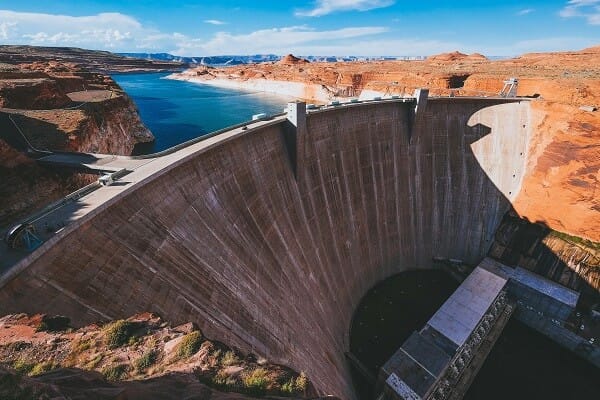As the world races to reduce its carbon emissions, renewable energy adoption has emerged as one of the most effective solutions in the fight against climate change. With each passing year, the urgency to transition away from fossil fuels becomes clearer, as rising temperatures and extreme weather events remind us of the immediate need for action. Governments, industries, and communities worldwide are ramping up efforts to adopt cleaner, greener energy sources.

But how much progress has been made so far? In this post, we’ll explore the advancements in renewable energy adoption as of 2024, and highlight the top three renewable energy options that have the most potential to reduce global carbon emissions.
The State of Renewable Energy in 2024
Renewable energy has seen remarkable growth in recent years, but the world is still grappling with how to meet its climate targets, especially the goal of limiting global warming to 1.5°C. The adoption of renewable energy technologies such as solar, wind, and hydropower has accelerated across the globe. According to the International Energy Agency (IEA), the year 2023 marked a turning point, with renewables making up over 30% of the world’s total energy capacity. However, fossil fuels still account for the majority of global energy consumption, and there’s much work to be done to fully transition to a sustainable future.
Let’s dive deeper into the progress made in the adoption of renewable energy sources and the challenges that lie ahead.
Top 3 Renewable Energy Sources Leading the Fight Against Climate Change
There are various forms of renewable energy, but three options stand out as having the greatest potential to mitigate the effects of climate change: solar energy, wind energy, and hydropower. Each of these plays a critical role in decarbonizing energy systems and creating a more sustainable future.
1. Solar Energy: A Growing Powerhouse

Current Progress:
Solar energy is one of the fastest-growing renewable energy sources. By 2024, solar photovoltaic (PV) installations had become more affordable than ever, largely due to advancements in technology and mass production. In fact, the cost of solar energy has dropped by more than 80% over the past decade, making it competitive with traditional fossil fuels in many parts of the world. The global capacity of solar PV systems now exceeds 1 terawatt (TW), and new installations continue to soar, particularly in regions with high solar irradiance such as China, the U.S., and India.
How Solar Energy Fights Climate Change:
Solar energy is critical in reducing greenhouse gas emissions because it produces electricity without burning fossil fuels. This means that once a solar panel is installed, it can generate clean energy for decades, dramatically reducing a region’s carbon footprint. Solar is also a decentralized energy source, meaning that individual homes and businesses can install panels, lessening their dependence on large-scale power plants and reducing grid strain.
Challenges:
One of the biggest challenges facing solar energy is energy storage. Since solar power is only available when the sun is shining, storing excess energy in batteries for use at night or during cloudy days is essential for reliability. Fortunately, battery technology is improving, and solutions like Tesla’s Powerwall and large-scale energy storage projects are becoming more widespread.
2. Wind Energy: Harnessing the Power of Nature

Current Progress:
Wind energy has made impressive strides over the past decade, with both onshore and offshore wind farms expanding globally. As of 2024, wind energy contributes nearly 8% of the world’s electricity, with Europe, China, and the United States leading in capacity. Offshore wind, in particular, is growing at an unprecedented rate, thanks to technological innovations that allow for larger turbines and installations farther from shore, where wind speeds are higher and more consistent.
How Wind Energy Fights Climate Change:
Wind energy plays a significant role in decarbonizing electricity grids. Like solar, it generates power without emitting carbon dioxide or other pollutants. The ability to scale up wind farms quickly makes it a vital component in meeting climate goals. Offshore wind farms, in particular, have the potential to generate vast amounts of clean electricity due to the availability of strong, consistent winds in coastal areas.
Challenges:
Despite its rapid growth, wind energy faces several hurdles, including public opposition to the visual impact of onshore wind farms and the high cost of installing offshore turbines. Furthermore, wind energy is intermittent, meaning that power generation fluctuates based on weather conditions. Similar to solar energy, better energy storage solutions are required to ensure that wind energy can meet demand consistently.
3. Hydropower: The Old Reliable

Current Progress:
Hydropower is the world’s largest source of renewable electricity, contributing around 16% of global power as of 2024. Large dams and river systems have long been used to generate electricity by harnessing the flow of water. Countries like Brazil, Canada, and China rely heavily on hydropower to meet their energy needs. While new large-scale dam projects have slowed due to environmental concerns, the focus has shifted toward small-scale hydropower and improving the efficiency of existing infrastructure.
How Hydropower Fights Climate Change:
Hydropower is a stable, continuous source of clean energy. Unlike solar and wind, hydropower can provide a reliable baseload of electricity, making it a crucial balancing force in renewable energy grids. Because of its reliability, hydropower is often used to complement intermittent renewable sources like wind and solar, filling in gaps when those sources are not generating electricity.
Challenges:
While hydropower is a renewable source of energy, it does have significant environmental downsides. Large dams can disrupt ecosystems, displace communities, and harm wildlife. Moreover, climate change itself is affecting hydropower by altering water availability in some regions. Droughts and changing precipitation patterns can reduce the effectiveness of hydropower plants, particularly in areas that rely heavily on seasonal rainfall.
What’s Holding Back Renewable Energy?
Despite the impressive progress made in solar, wind, and hydropower, the global transition to renewable energy is far from complete. Several barriers are slowing the adoption of renewables, including:
1. Energy Storage and Grid Integration

One of the main challenges in scaling renewable energy is the need for better energy storage systems. Solar and wind are intermittent energy sources, meaning they don’t generate electricity 24/7. To maintain a stable power grid, excess energy must be stored and released as needed. While battery technology is improving, the infrastructure needed to support a fully renewable grid is still in development.
2. High Upfront Costs
While renewable energy is becoming more affordable, the initial investment for setting up solar or wind farms can still be high, particularly in developing countries. Governments and private sectors need to work together to provide the necessary funding and incentives to promote the growth of renewable energy in all regions of the world.
3. Policy and Political Challenges
The speed at which renewable energy is adopted often depends on government policies and incentives. In some countries, fossil fuel industries remain heavily subsidized, making it harder for renewables to compete. Moreover, political resistance to renewable energy policies, such as carbon taxes or emissions limits, can stall progress.
4. Public Perception and Opposition

Renewable energy projects, particularly wind and hydropower, sometimes face public opposition. Local communities may object to the construction of new wind farms or dams due to concerns about their impact on landscapes, wildlife, or property values. Overcoming these objections through community engagement and education will be key to accelerating the renewable transition.
What’s Next for Renewable Energy?
As we move further into 2024, the path forward for renewable energy looks promising, but significant challenges remain. For the world to meet its climate goals and avoid the worst impacts of global warming, renewable energy adoption must continue to accelerate. Governments, businesses, and individuals all play a role in pushing for a cleaner, greener energy future.
The focus moving forward will likely be on:
- Advancing battery storage technology to make intermittent renewable energy sources more reliable.
- Expanding offshore wind farms, particularly in regions with abundant coastal wind resources.
- Investing in small-scale hydropower and retrofitting existing infrastructure to minimize environmental harm.
Conclusion: A Renewable Future is Within Reach
The progress made in renewable energy adoption as of 2024 is impressive, but the world must continue to push for greater action to meet its climate goals. With solar, wind, and hydropower leading the way, the energy transition is well underway. However, challenges like energy storage, high costs, and political resistance must be addressed to fully unlock the potential of renewable energy. The future of clean energy is bright, and with continued innovation and investment, we can significantly reduce our reliance on fossil fuels and mitigate the worst effects of climate change
Pingback: 7 Powerful Human Activities That Will Drastically Reduce Carbon Emissions and Slow Climate Change - Ecological Crusader
Pingback: Top Trends in Renewable Energy for 2024: What You Need to Know Now - Ecological Crusader
Comments are closed.